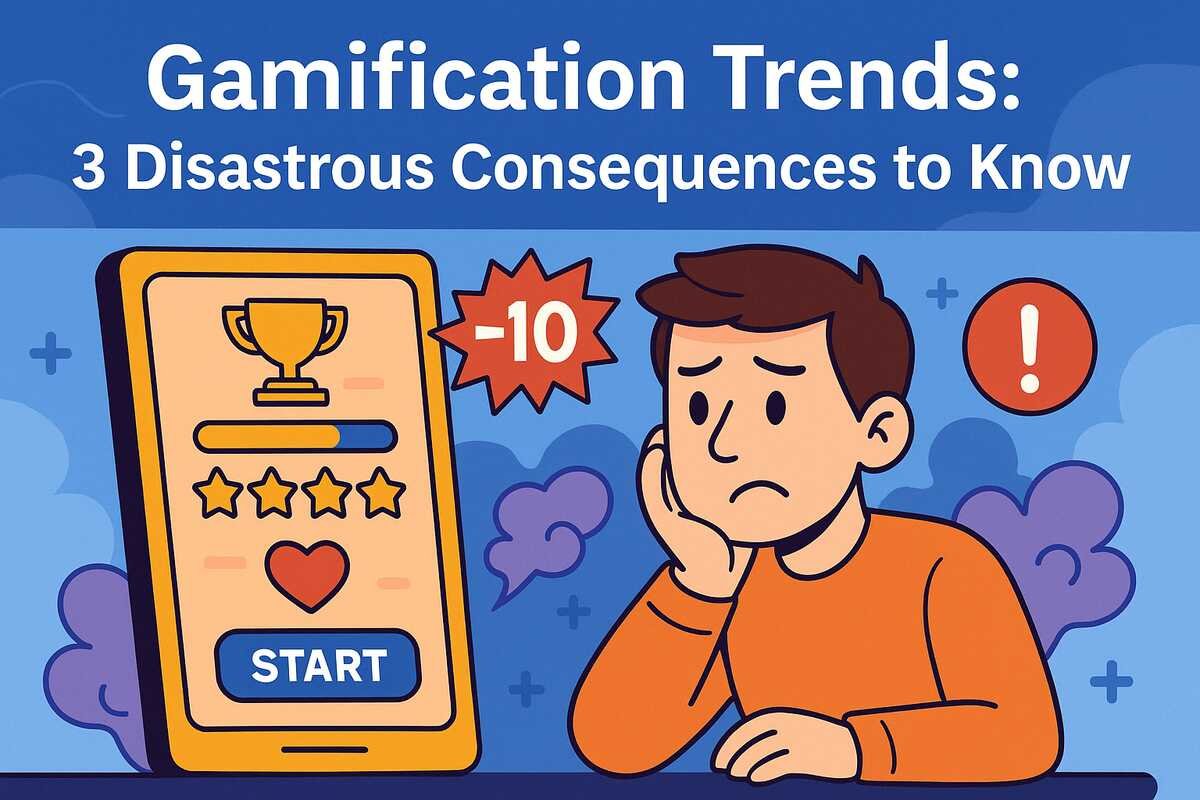Physical Address
304 North Cardinal St.
Dorchester Center, MA 02124
Physical Address
304 North Cardinal St.
Dorchester Center, MA 02124


Have you ever wondered why your audience disengages or why employee productivity seems to plateau despite your best efforts? If so, you’re not alone—and you might be missing out on one of the most powerful engagement strategies of our time: gamification trends.
From Fortune 500 companies to educational platforms, gamification is reshaping how businesses connect with users, clients, and employees. It’s not just about playing games—it’s about leveraging game mechanics to influence behavior, boost motivation, and drive real-world results. Ignoring these trends can cost you more than you think.
Let’s break down the three most disastrous consequences of neglecting gamification in today’s digital and workplace environments.
Gamification taps into basic psychological triggers: achievement, competition, progress, and reward. When users are given badges, points, levels, or challenges, they’re far more likely to return, participate, and stay loyal.
| Platform | With Gamification | Without Gamification |
|---|---|---|
| Duolingo | Daily streaks, XP, leagues | Plain language lessons |
| Fitbit | Steps, trophies, badges | Standard activity tracking |
| Profile strength meter | No engagement element |
Ignoring gamification trends removes this vital layer of engagement, resulting in user fatigue and eventual churn.
Incorporating gamified systems into workplace tasks can transform how teams approach goals, training, and collaboration. Platforms like Salesforce and Microsoft Teams now integrate rewards and rankings to keep employees engaged.
Gamified environments use:
Neglecting this trend can make daily work feel monotonous and unmotivating, leading to underperformance.
According to a Gallup study, disengaged employees cost companies 34% of their salary in lost productivity.
Modern consumers expect experiences, not just services. Businesses using gamification in customer journeys, loyalty programs, or app interfaces stand out dramatically in competitive markets.
Examples:
Ignoring gamification doesn’t just cost you customers; it allows your competitors to capture more attention, loyalty, and data.

Identify where motivation drops off. Look at onboarding, training, customer support, and product usage flows.
Start with simple elements:
Look for systems like:
Current trends include personalized challenges, AI-powered progression paths, dynamic leaderboards, and integration with wearables and AR/VR tech.
It increases user retention, improves employee engagement, supports behavioral change, and enhances learning and training outcomes.
Absolutely. Even low-cost tools and strategies—like progress meters or digital badges—can yield powerful results without a massive budget.
In a world where engagement is everything, gamification trends aren’t optional—they’re essential. Whether you’re building a SaaS platform, developing an e-learning course, or leading a team, integrating game mechanics could be the missing link between mediocre results and outstanding outcomes.
So, what’s next? Start small, measure impact, and iterate. Most importantly, don’t ignore the powerful force reshaping how we work, play, and connect.